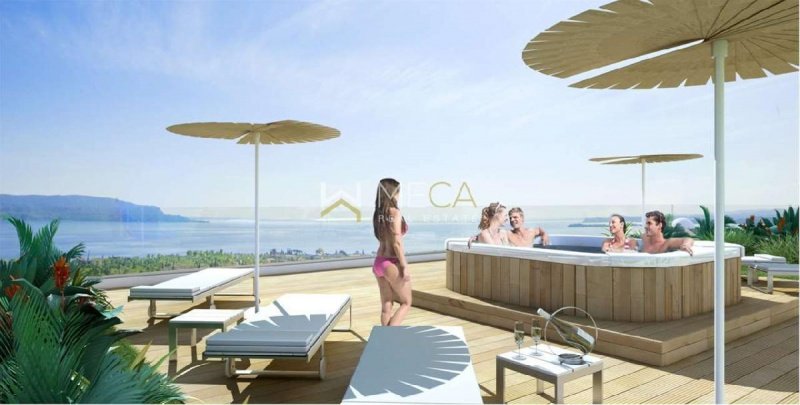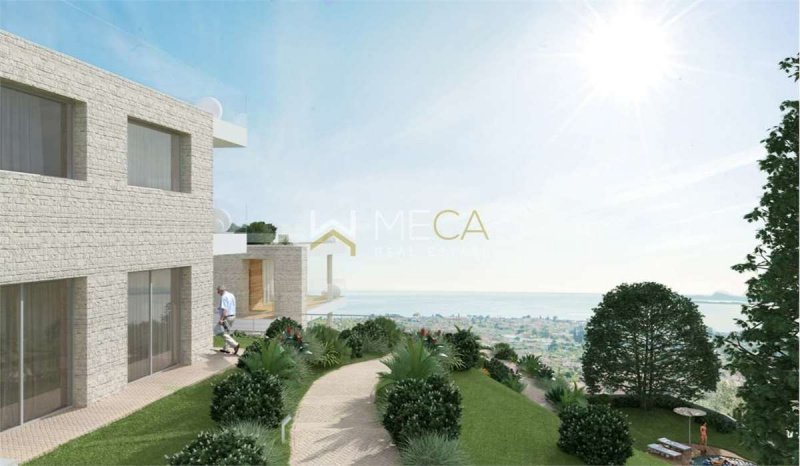1,550,000 €
3间卧室阁楼, 170 m² 托斯科拉诺-马德尔诺, Brescia (省) 加尔达湖
加尔达湖
主要特点
描述
特豪华公寓享有湖泊的全景,在加尔达地区独一无二,从以最有价值的材料建造的1,250,000欧元开始,由现代和独特的家庭自动化系统提供服务,满足最不同的需求,并允许您根据业主的口味规划和赋予公寓生命;
所有周边墙壁和最先进的窗户上都有大衣,可以保持内部温度。
安全由非常高的技术保证,但业主手工完全管理,以避免任何问题;
Vasta游泳池通过家庭自动化连接,有可能使其成为一个巨大的按摩浴缸,并创造令人难以置信的风景效果与点击。
该结构包括三室公寓、四室公寓和更多的公寓,所有公寓都享有湖景。
加尔达的非凡和独特的结构。
古迹和景点:
托斯卡纳的圣彼得教堂和保罗使者教堂。
马德诺: 圣安德烈亚大教堂,12世纪罗马式建筑。
宫殿贡扎加,17世纪。
Palazzo Bulgheroni宫,17世纪。
苏皮纳保护区
托斯卡纳马德诺植物园
托斯卡纳马德诺卡博物馆
历史:
该地区自巴尔多利诺圣科隆巴诺修道院庭院的伦巴第时期和索拉罗洛(马内巴德尔加尔达)修道院(马内尔巴德尔加尔达)的庭院以来,一直有一部分,依赖于圣科隆巴诺迪博比奥(PC)修道院和博比奥大修道院。 僧侣对领土进行了福音传说,赞成扩大商业,农业(特别是藤蔓和橄榄树),渔业系统和文化,引入了重要的创新和开放的贸易道路。
特别是托斯卡纳有罗马血统,由一座大别墅的遗迹作证,今天,您可以看到马赛克装饰地板的部分,这些地板本来由罗马控制台马尔科诺尼奥马克里诺拥有。 托斯科拉诺教区教堂建于1571年,致力于圣彼得和保罗,长期以来是布雷西亚主教区的夏季家园。 它包含威尼斯艺术家安德里亚·塞莱斯蒂的重要绘画周期。 在托斯卡纳河谷的最后一部分,纸业从1300年代发展; 在欧洲第一个和最重要的地方。 因此,这个山谷被称为"Valley delle Cartiere"。 作为证词,有一份日期为1381年10月17日的文件,其主题是马德诺镇和托斯卡纳镇(后来分裂)之间的公约,与该公约相比,河流水的划分和使用条例分为九点。
在被称为苏皮纳的土地上,有15世纪末建造的苏皮纳保护区。
能量类:
所有周边墙壁和最先进的窗户上都有大衣,可以保持内部温度。
安全由非常高的技术保证,但业主手工完全管理,以避免任何问题;
Vasta游泳池通过家庭自动化连接,有可能使其成为一个巨大的按摩浴缸,并创造令人难以置信的风景效果与点击。
该结构包括三室公寓、四室公寓和更多的公寓,所有公寓都享有湖景。
加尔达的非凡和独特的结构。
古迹和景点:
托斯卡纳的圣彼得教堂和保罗使者教堂。
马德诺: 圣安德烈亚大教堂,12世纪罗马式建筑。
宫殿贡扎加,17世纪。
Palazzo Bulgheroni宫,17世纪。
苏皮纳保护区
托斯卡纳马德诺植物园
托斯卡纳马德诺卡博物馆
历史:
该地区自巴尔多利诺圣科隆巴诺修道院庭院的伦巴第时期和索拉罗洛(马内巴德尔加尔达)修道院(马内尔巴德尔加尔达)的庭院以来,一直有一部分,依赖于圣科隆巴诺迪博比奥(PC)修道院和博比奥大修道院。 僧侣对领土进行了福音传说,赞成扩大商业,农业(特别是藤蔓和橄榄树),渔业系统和文化,引入了重要的创新和开放的贸易道路。
特别是托斯卡纳有罗马血统,由一座大别墅的遗迹作证,今天,您可以看到马赛克装饰地板的部分,这些地板本来由罗马控制台马尔科诺尼奥马克里诺拥有。 托斯科拉诺教区教堂建于1571年,致力于圣彼得和保罗,长期以来是布雷西亚主教区的夏季家园。 它包含威尼斯艺术家安德里亚·塞莱斯蒂的重要绘画周期。 在托斯卡纳河谷的最后一部分,纸业从1300年代发展; 在欧洲第一个和最重要的地方。 因此,这个山谷被称为"Valley delle Cartiere"。 作为证词,有一份日期为1381年10月17日的文件,其主题是马德诺镇和托斯卡纳镇(后来分裂)之间的公约,与该公约相比,河流水的划分和使用条例分为九点。
在被称为苏皮纳的土地上,有15世纪末建造的苏皮纳保护区。
能量类:
此文本已自动翻译。
细节
- 物业类型
- 阁楼
- 状况
- 全新
- 房屋面积
- 170 m²
- 卧室
- 3
- 浴室
- 3
- 花园
- 178 m²
- 能效评级
- 参考代码
- MECA0386
距兴趣点的距离:
距离以直线计算
- 机场
32.0 km - Verona VBS - Brescia Montechiari
35.0 km - Verona VRN - Valerio Catullo
70.0 km - Milano BGY - Orio Al Serio
94.0 km - Parma PMF - Giuseppe Verdi
- 高速公路出口
- 17.5 km
- 医院
- 2.5 km - Casa di Cura Villa Gemma
- 海岸
- 138.6 km
- 滑雪胜地
- 8.9 km
在此物业附近
- 外出吃饭
180 m - 餐厅 - Pizzeria Gatto Giallo
270 m - 快餐餐厅
380 m - 冰淇淋店 - Gelateria Calchera
520 m - 咖啡店 - Bar Due Cilindri
- 体育运动
910 m - 体育中心 - Toscolano Maderno A.C. - 足球
3.9 km - 高尔夫俱乐部 - Golf Bogliaco
6.0 km - 马术中心
11.4 km - 健身房
- 学校
400 m - 学校 - Asilo di Toscolano Maderno
7.5 km - 大学 - Università degli Studi di Milano - Palazzo Feltrinelli
31.3 km - 高等教育机构 - Conservatorio di musica Luca Marenzio
- 药房
- 410 m - 药房 - Farmacia Gloria
- 兽医
- 7.5 km - 兽医 - Dott. Simone Finotti
托斯科拉诺-马德尔诺:关于城市的信息
- 海拔
- 高出海平面86m
- 面积
- 58.17 km²
- 地理区域
- 内陆山区
- 人口
- 7593
您如何看待该广告的质量?
提供有关此广告的反馈,帮助我们改善您的Gate-away体验。
请不要评估物业本身,而只是评估其展示的质量。


